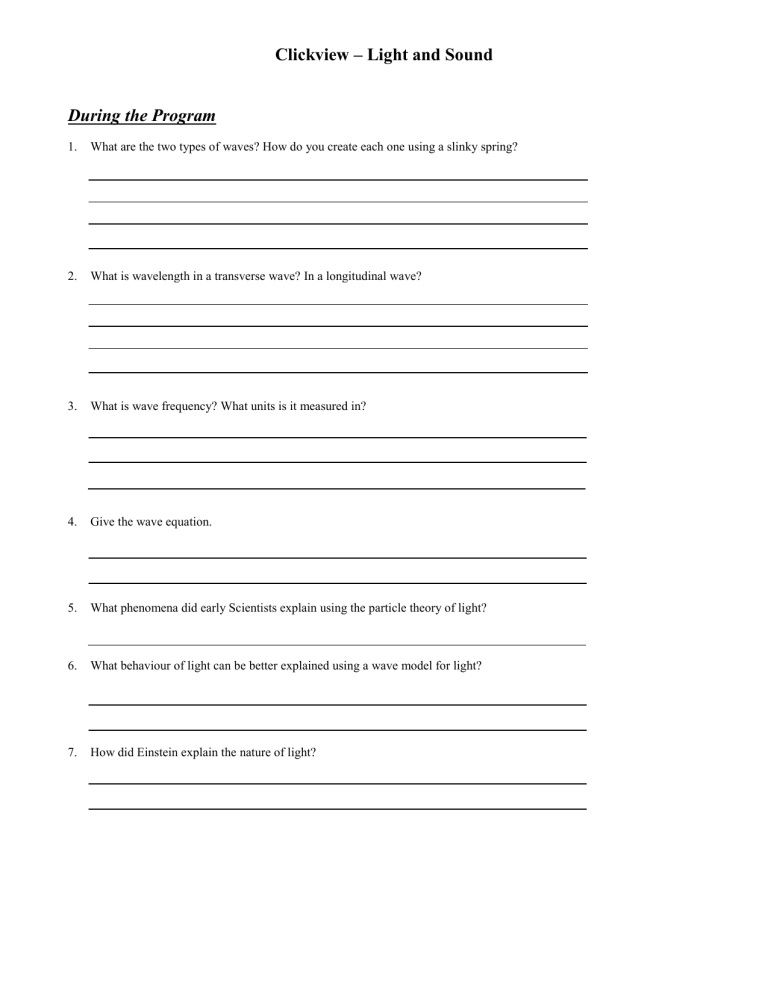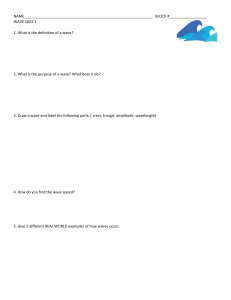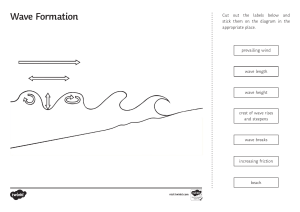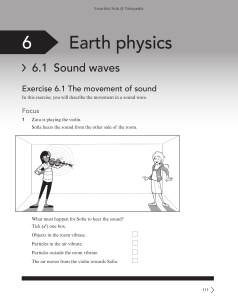
Clickview – Light and Sound During the Program 1. What are the two types of waves? How do you create each one using a slinky spring? 2. What is wavelength in a transverse wave? In a longitudinal wave? 3. What is wave frequency? What units is it measured in? 4. Give the wave equation. 5. What phenomena did early Scientists explain using the particle theory of light? 6. What behaviour of light can be better explained using a wave model for light? 7. How did Einstein explain the nature of light? 8. Why do shadows form? 9. What is the difference between transparent, translucent and opaque materials? 10. What is the relationship between the angle of incidence and the angle of reflection with a plane mirror? 11. What does a concave mirror look like? A convex mirror? Give one feature of each. 12. How does the lens of the eye allow us to focus on different objects? 13. What is the role of the macula in vision? 14. What is myopia and how is it corrected? 15. What is hyperopia and how can it be remedied? 16. What causes sound to be produced when we speak and how does the sound of speech travel through the air? 17. What is the relationship between pitch and frequency? 18. How fast does sound travel in air? In water? How is this knowledge applied in fishing? 19. How loud is normal speech? Sound that causes pain? How can we protect our ears from loud sound? What is a CRO used for? 20. Fill in the gaps in the following paragraph. Sound waves enter the ear through the ear canal and make the __________________ vibrate. It is also named this because it is a stretched piece of ________________________. The eardrum makes 3 tiny bones called the _____________________ vibrate. The fluid filled _____________________ also vibrates and these vibrations are passed onto small ________________ that line the cochlea. These hairs are connected to nerve cells and messages are sent to the brain via the _________________ nerve.




